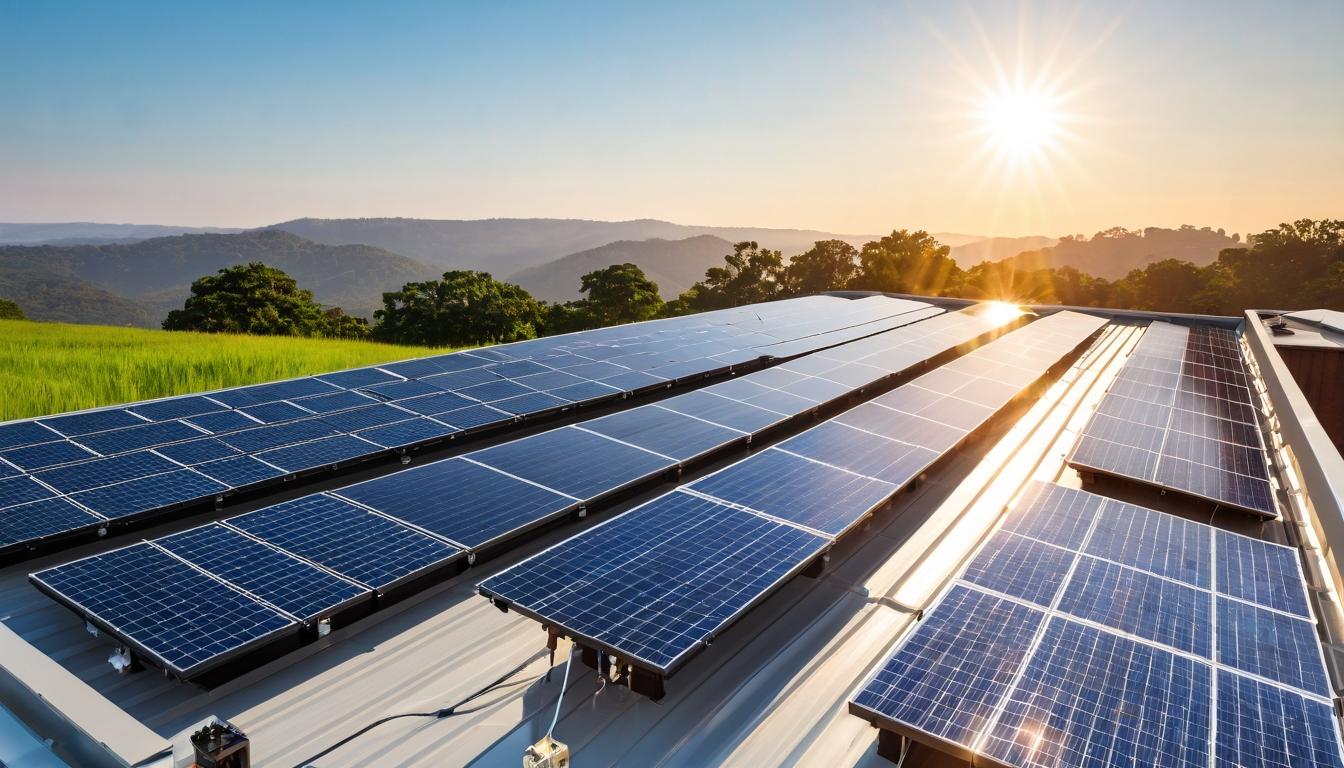Walking through the sprawling solar farms of California's Mojave Desert, you can't help but feel the quiet hum of transformation. Rows of photovoltaic panels stretch toward the horizon like metallic crops, harvesting sunlight with an efficiency that would have seemed like science fiction just a decade ago. This isn't just about clean energy anymore—it's about reimagining our entire relationship with power, from how we generate it to how we store and distribute it.
The solar industry has reached an inflection point that few predicted. While residential rooftop installations continue their steady march across suburban landscapes, the real revolution is happening behind the scenes. Utility-scale projects are now competing head-to-head with fossil fuels on pure economics, without subsidies or special treatment. The numbers tell a compelling story: solar costs have plummeted 89% since 2010, making it the cheapest electricity in history according to the International Energy Agency.
What's driving this unprecedented cost reduction isn't just better manufacturing—it's a fundamental rethinking of solar technology itself. Perovskite solar cells, once confined to laboratory demonstrations, are now entering commercial production with efficiencies that challenge traditional silicon. These thin, flexible materials can be printed like newspaper and applied to virtually any surface, from building facades to car roofs. The implications are staggering: imagine entire cities where every sun-facing surface becomes a power generator.
Meanwhile, the storage revolution is solving solar's Achilles' heel—intermittency. Lithium-ion batteries get most of the attention, but the real innovation is happening in alternative storage technologies. Flow batteries the size of shipping containers can store enough energy to power small towns through the night. Thermal storage systems use molten salt to capture solar heat and release it on demand. Even gravitational storage—using excess solar power to lift massive weights that generate electricity when lowered—is seeing renewed investment.
The integration of artificial intelligence is creating solar systems that think for themselves. Machine learning algorithms now predict cloud cover minutes before it happens, allowing solar farms to ramp up alternative generation smoothly. Smart inverters communicate with each other across the grid, balancing supply and demand in real-time. These digital technologies are turning what was once a passive energy source into an active participant in grid management.
Community solar projects are democratizing access in ways that were unimaginable just five years ago. Instead of requiring homeowners to invest thousands in rooftop systems, these shared solar gardens allow renters, low-income families, and even small businesses to subscribe to clean energy from offsite arrays. The model has proven so successful that states from New York to Minnesota are mandating community solar programs as part of their climate initiatives.
Manufacturing innovation is rewriting the rules of solar production. Bifacial panels that capture light from both sides are becoming standard in utility projects. Half-cut cell technology reduces resistance losses and improves performance in shaded conditions. Even recycling has become a growth industry, with specialized facilities recovering 95% of materials from decommissioned panels for reuse in new products.
The international landscape reveals surprising shifts in solar leadership. While China continues to dominate manufacturing, countries like Vietnam and India are emerging as installation powerhouses. In Europe, floating solar farms on reservoirs and lakes are solving land-use conflicts while reducing water evaporation. The Middle East, once synonymous with oil, now hosts some of the world's largest solar projects as nations diversify their energy mix.
Regulatory frameworks are struggling to keep pace with technological change. Net metering policies designed for a few thousand early adopters are being reevaluated as solar penetration approaches 20% in some markets. New rate structures and grid modernization investments are creating a more dynamic relationship between utilities and distributed generation. The debate has moved from whether we should adopt solar to how we can integrate it most effectively.
Looking ahead, the convergence of solar with other technologies promises even greater disruption. Solar-plus-electric vehicle charging creates self-sufficient transportation networks. Agricultural solar—growing crops beneath elevated panels—addresses food and energy production simultaneously. Building-integrated photovoltaics are turning skyscrapers into vertical power plants. The boundaries between energy producer and consumer are blurring beyond recognition.
The human dimension of this transformation often gets lost in technical discussions. Solar jobs are growing twelve times faster than the overall U.S. economy, creating opportunities in rural communities and urban centers alike. Energy independence is becoming a reality for households and businesses, insulating them from price volatility and supply disruptions. The environmental benefits extend beyond carbon reduction to improved air quality and water conservation.
As the sun sets on another day of innovation, one thing becomes clear: we're not just witnessing the growth of an industry, but the birth of a new energy paradigm. The solar revolution has moved from alternative to inevitable, from niche to necessary. What began as a environmental movement has become an economic imperative, driven by relentless innovation and declining costs. The future isn't just bright—it's positively solar-powered.
The solar revolution: how emerging technologies are reshaping our energy landscape




